- Home
- The Summer Garden
- Modern Roses
Modern Roses Fulfill the Gardener's Dream for Color, Form and Continuous Bloom
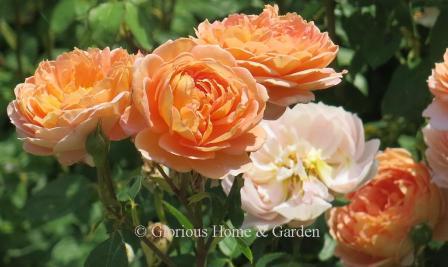
Modern roses have been developed to fulfill nearly every desire of the home gardener, hobbyist, florist, or commercial grower. A wide range of colors now exist that were unknown even a few decades ago. A desire for longer bloom periods and repeat blooming fueled the efforts of hybridizers. Exquisitely shaped Hybrid Teas with elegant pointed buds and long stems perfect for arrangements have been a hit since they were introduced in the late 19th c. Over the past few decades, rose breeders such as David Austin, developed shrub roses perfect for the home landscape that featured repeat blooming and modern colors with the shape and delightful fragrance of the old garden roses.
Hybrid Teas
When ‘La France,’ the first hybrid tea rose, was introduced in 1867 it created such a sensation and desire for this new type of rose that the old garden roses fell into disfavor. What was so exceptional about ‘La France’ that made everyone go gaga? It had long stems that were great for cutting, it had tight high-centered buds that unfurled to large, full blooms with petals that recurved and were very fragrant.
Hybrid Teas, still the most popular group of roses in the world today, were created by crossing older groups of roses such as Hybrid Perpetuals and Teas, which brought repeat blooming and fragrance. Rosa foetida was also introduced into breeding programs which we can thank for adding yellows, oranges and reds into the color range; but that increase in color variety, came at the cost of a susceptibility to fungal diseases like blackspot—the bane of all rose growers. As beautiful as the flowers of Hybrid Teas are, the shrubs themselves often lack the grace of the old garden roses being rather stiff and difficult to combine with other garden plants, so they are often grown in formal beds for cutting purposes. They are also susceptible to fungal diseases such as blackspot and powdery mildew, and some (certainly not all) are almost devoid of fragrance. But the blooms are undeniably beautiful in a range of gorgeous colors from white, to cream, yellow, apricot, orange, pink, red, mauve, purple, blends, and bi-colors. And if well-grown, are highly desirable as cut flowers for arrangements and bouquets. They are also beautiful grown as standards, or “tree” roses.
Hybrid Teas need full sun for optimal growth. They are heavy feeders and benefit from a regular feeding program of a balanced fertilizer applied about every two weeks starting when new growth begins to appear in spring until early fall. Mulch during the growing season to keep roots cool and help retain moisture and prevent weeds. The old mulch should be raked out and replaced yearly--fall is a good time to do this when doing garden clean-up--to remove any fallen leaves or debris where fungal spores or insects could hide. Good sanitation is essential for any type of rose, and goes a long way toward preventing disease. Water when rainfall has been insufficient, taking care to soak the soil and try to keep the leaves dry to help prevent fungal infections. Pruning is best done in late winter or early spring before the leaves begin to emerge. Remove dead or diseased wood, crossed canes, weak growth, and reduce the healthy canes to about 18-24” making slanted cuts above an outward-facing bud so new growth will grow outwards. You are aiming for an open center for good air circulation and a nicely-shaped plant.
There are hundreds of varieties of Hybrid Teas. Here are just a few.
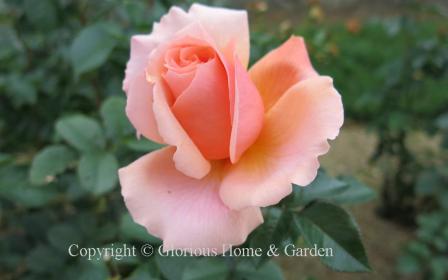 Rosa 'Apricot Candy,' Meilland, 2006.
Rosa 'Apricot Candy,' Meilland, 2006.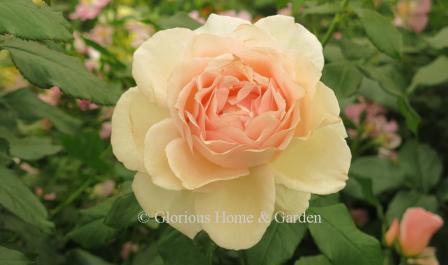 Rosa 'Chandos Beauty,' Harkness, prior to 2005.
Rosa 'Chandos Beauty,' Harkness, prior to 2005.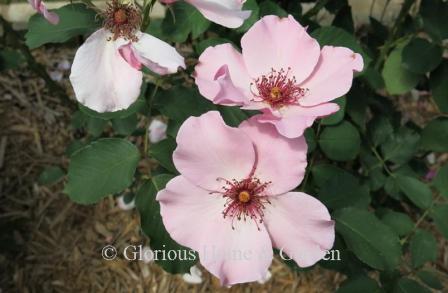 Rosa 'Dainty Bess,' Archer, 1925.
Rosa 'Dainty Bess,' Archer, 1925.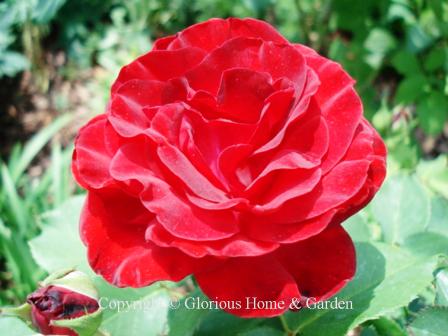 Rosa ‘Dame de Coeur,’ Lens, 1958.
Rosa ‘Dame de Coeur,’ Lens, 1958.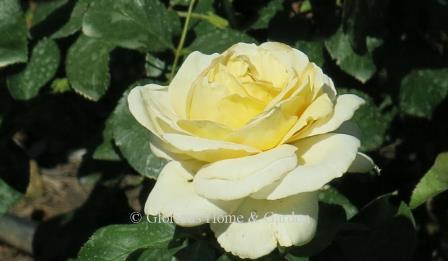 Rosa ‘La Perla,’ Kordes, 2008.
Rosa ‘La Perla,’ Kordes, 2008.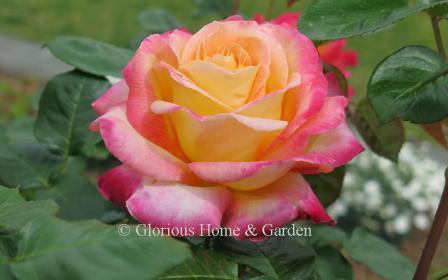 ‘Love and Peace®, Lim and Twomey, 1991.
‘Love and Peace®, Lim and Twomey, 1991.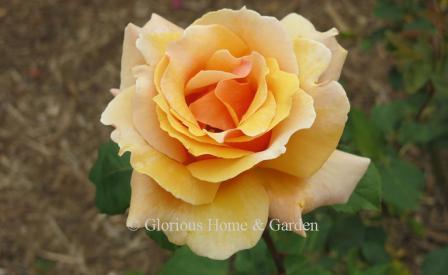 Rosa ‘Medallion,’ Warriner, 1973.
Rosa ‘Medallion,’ Warriner, 1973.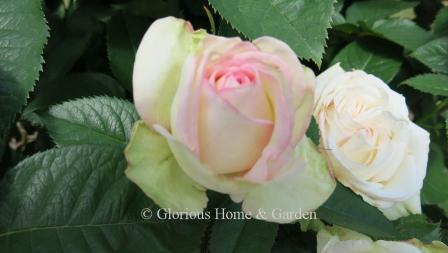 Rosa ‘Moonstone,’ Carruth, 1998.
Rosa ‘Moonstone,’ Carruth, 1998.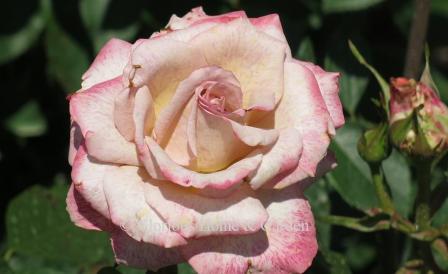 Rosa ‘Pinkerbelle,’ Meilland, 2018.
Rosa ‘Pinkerbelle,’ Meilland, 2018.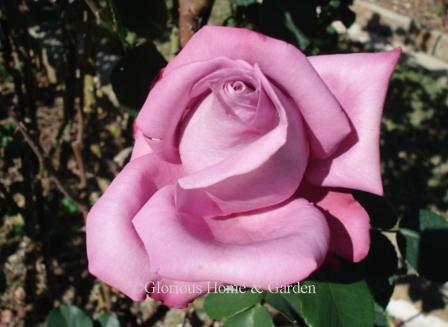 Rosa ‘Royal Amethyst,’ De Vor, 1989.
Rosa ‘Royal Amethyst,’ De Vor, 1989.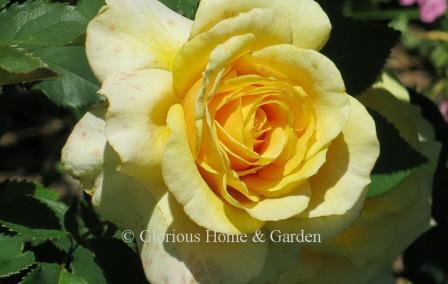 Rosa ‘Sunny Sky,’ Kordes, 1999.
Rosa ‘Sunny Sky,’ Kordes, 1999.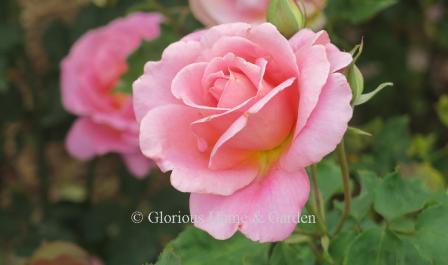 Rosa ‘Tiffany,’ Lindquist, 1955.
Rosa ‘Tiffany,’ Lindquist, 1955.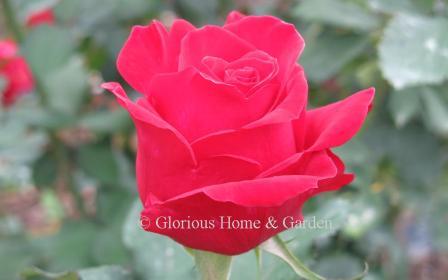 Rosa ‘Veteran’s Honor,’ Zary, 1997.
Rosa ‘Veteran’s Honor,’ Zary, 1997.Floribunda Roses
Floribunda Roses
Zones 4-9 : Floribunda roses are characterized by clusters of buds and a
long bloom period from summer into fall.
The flowers are smaller than Hybrid Teas, but are full and borne in
abundance. Floribundas are wonderful to
include in mixed perennial borders, or massed for color. There is a wide range of colors from whites
to creams, yellows, peaches, corals, pinks, deep reds, maroons and purples. Some very well-known roses are in this
category including 'Amber Queen,' apricot; 'Burgundy Iceberg,' purple; 'Cinco de Mayo,' red-orange; ‘Ebb Tide,’ purple ; ‘Europeana,’ red ; 'Gruss an Aachen,' pale pink; ‘Hot
Cocoa,’ reddish-orange ; ‘Iceberg,’ white ; ‘Julia Child,’
yellow ; ‘Passionate Kisses,’ pink ; ‘Scentimental,’ red and
white variegated; and 'You're Beautiful,' pink.
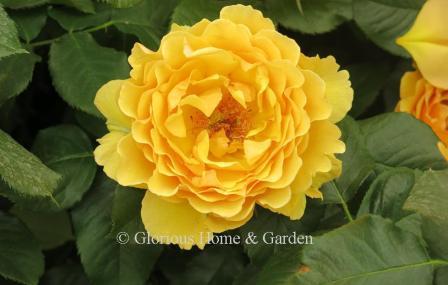 Rosa ‘Amber Queen,’ Harkness, 1983.
Rosa ‘Amber Queen,’ Harkness, 1983.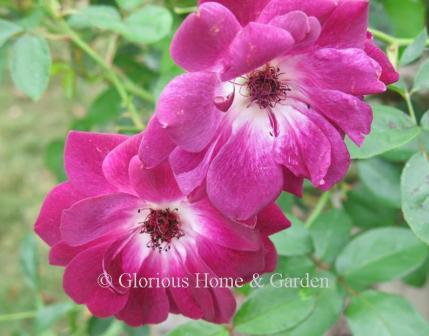 Rosa ‘Burgundy Iceberg,’ 2003.
Rosa ‘Burgundy Iceberg,’ 2003.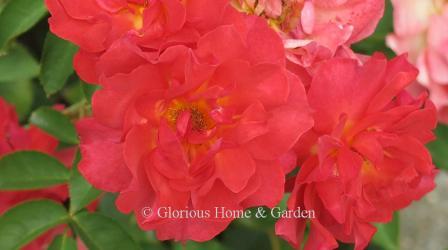 Rosa ‘Cinco de Mayo,’ Carruth, 2006.
Rosa ‘Cinco de Mayo,’ Carruth, 2006.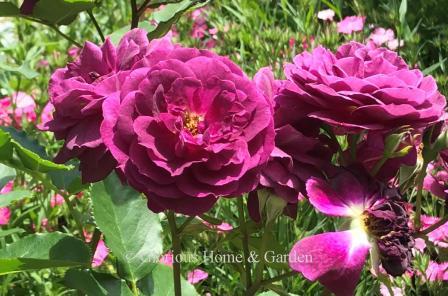 Rosa ‘Ebb Tide,’ Carruth, 2001.
Rosa ‘Ebb Tide,’ Carruth, 2001.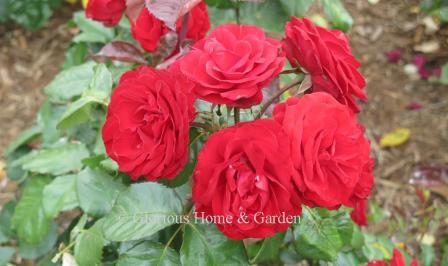 Rosa ‘Europeana,’ De Ruiter Innovations BV, 1963.
Rosa ‘Europeana,’ De Ruiter Innovations BV, 1963.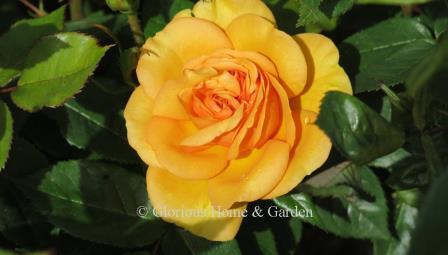 Rosa 'Golden Beauty,' Kordes, 1994. Also known as 'South Africa.'
Rosa 'Golden Beauty,' Kordes, 1994. Also known as 'South Africa.'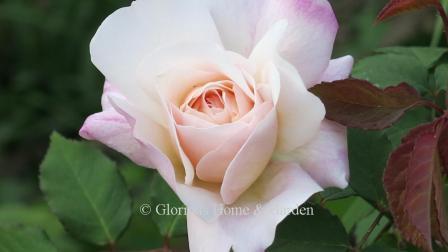 Rosa ‘Gruss an Aachen,’ Geduldig, 1909.
Rosa ‘Gruss an Aachen,’ Geduldig, 1909.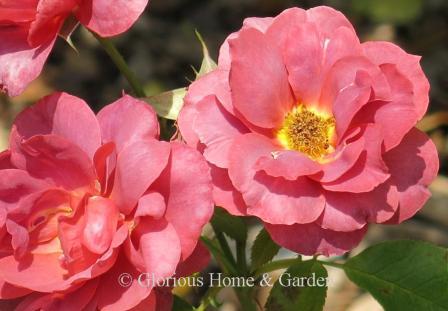 Rosa ‘Hot Cocoa,’ Carruth, 2002.
Rosa ‘Hot Cocoa,’ Carruth, 2002.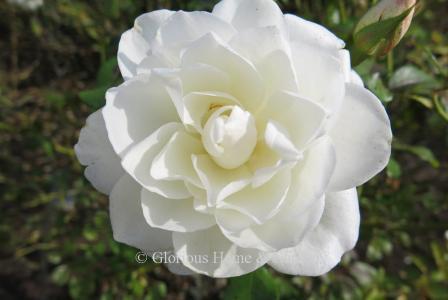 Rosa ‘Iceberg,’ Kordes, 1958.
Rosa ‘Iceberg,’ Kordes, 1958.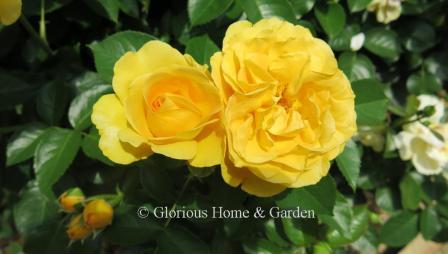 Rosa ‘Julia Child,’ Carruth, 2004.
Rosa ‘Julia Child,’ Carruth, 2004.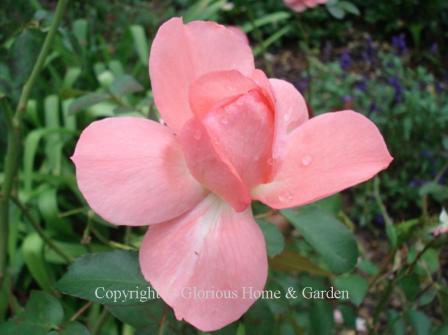 Rosa ‘Passionate Kisses®,’ Meilland, 1998.
Rosa ‘Passionate Kisses®,’ Meilland, 1998.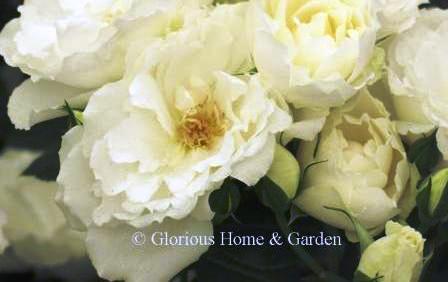 Rosa ‘Princess of Wales,’ Harkness, 1997.
Rosa ‘Princess of Wales,’ Harkness, 1997.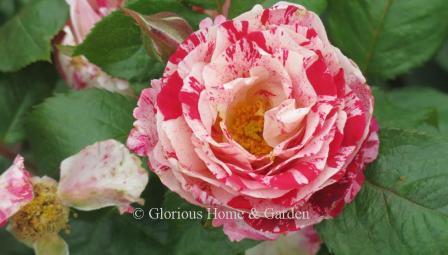 Rosa ‘Scentimental,’ Carruth, 1997.
Rosa ‘Scentimental,’ Carruth, 1997.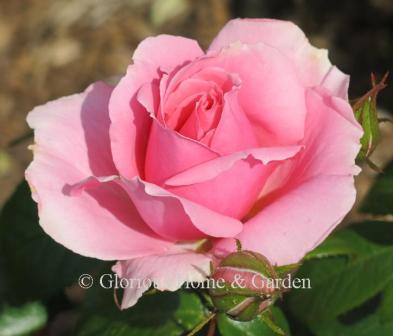 Rosa ‘You’re Beautiful,’ Fryer, prior to 2007.
Rosa ‘You’re Beautiful,’ Fryer, prior to 2007.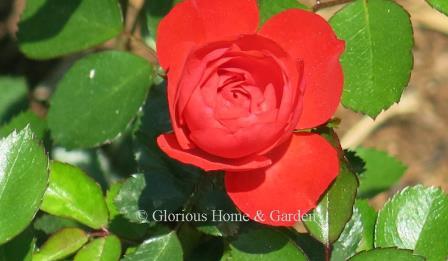 Rosa Veranda® 'Brilliant™,' Kordes, 2008.
Rosa Veranda® 'Brilliant™,' Kordes, 2008.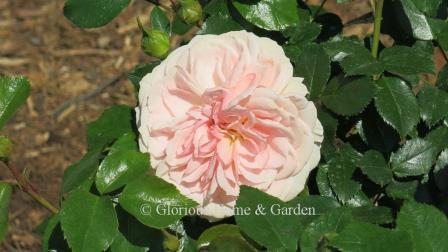 Rosa Veranda® 'Cream™,' Kordes, 2006.
Rosa Veranda® 'Cream™,' Kordes, 2006.Grandiflora Roses
Grandifloras were developed to have the large blooms of hybrid teas with multiple blooms per stem and repeat flowering Grandifloras include ‘Apricot Nectar,’ apricot; ‘Ascot,’ deep pink/purple; ‘Cherry Parfait™,’ cream w/red edges; 'Dick Clark,' red w/touches of white and yellow; ‘Dream Come True™,’ yellow edged with rose; ‘Gold Medal,’ yellow flushed pink or orange; Nacogdoches,' yellow; ‘Prominent,’ red; ‘Queen Elizabeth,’ pink; ‘Silver Star™,’ lavender; ‘White Lightnin’,’ white.
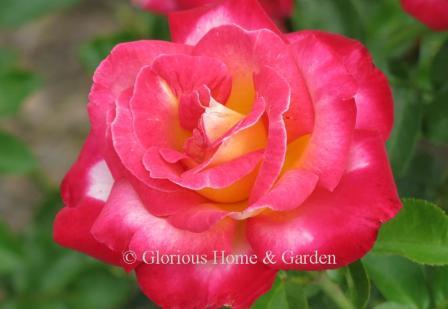 Rosa ‘Dick Clark,’ Bedard and Carruth, 2009.
Rosa ‘Dick Clark,’ Bedard and Carruth, 2009.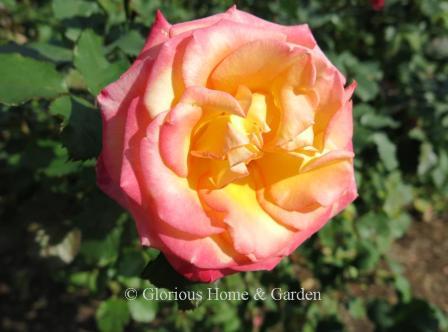 Rosa ‘Dream Come True™,’ Pottschmidt, 2006.
Rosa ‘Dream Come True™,’ Pottschmidt, 2006.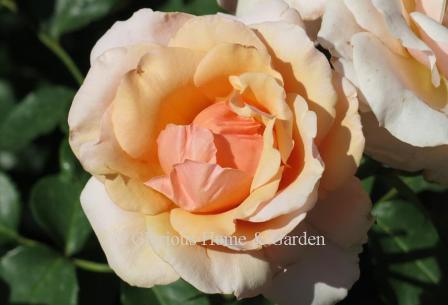 Rosa ‘Mother of Pearl,’ Meilland, 2006.
Rosa ‘Mother of Pearl,’ Meilland, 2006.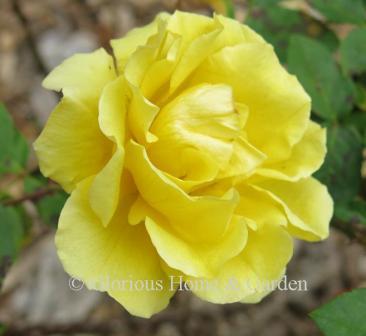 Rosa ‘Nacogdoches,’ or ‘Grandma’s Yellow,’ a found rose.
Rosa ‘Nacogdoches,’ or ‘Grandma’s Yellow,’ a found rose.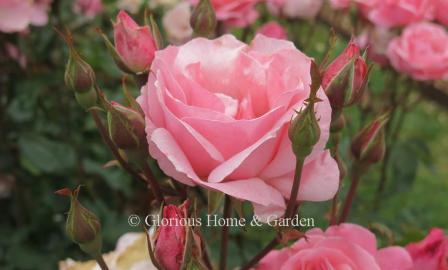 Rosa ‘Queen Elizabeth,’ Lammerts, 1954.
Rosa ‘Queen Elizabeth,’ Lammerts, 1954.Polyantha Roses
Polyantha roses are charming with their clusters of blooms. They make excellent companions for perennials in the border or as a low hedge. Their small size makes them suitable for smaller gardens. The flowers are smaller too, and are borne in generous clusters. Polyanthas include ‘Cecile Brunner’ also called Sweetheart Rose, pink; ‘Clotilde Soupert,’ ‘Excellenz von Schubert,’ pink; ‘Katharina Zeimet,’ white; ‘La Marne,’ pink; ‘Little Butterfly,’ single pale pink; ‘Marie Pavie,’ pale pink to white; ‘Perle d’Or,’ apricot; The Fairy,’ pink; ‘Verdun,’ deep pink; ‘White Pet’ white.
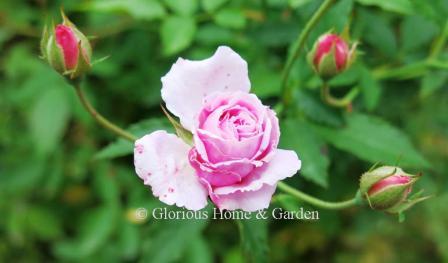 ‘Caldwell Pink,’ a found rose by Dr. William C. Welch, an Earth-Kind® selection.
‘Caldwell Pink,’ a found rose by Dr. William C. Welch, an Earth-Kind® selection.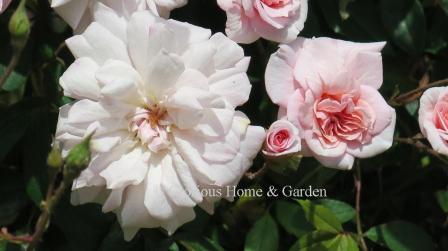 ‘Cecile Brunner,’ Ducher, 1881, an Earth-Kind® selection.
‘Cecile Brunner,’ Ducher, 1881, an Earth-Kind® selection.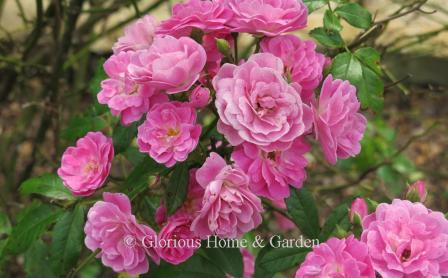 Rosa ‘Excellenz von Schubert,’ Lambert, 1909.
Rosa ‘Excellenz von Schubert,’ Lambert, 1909.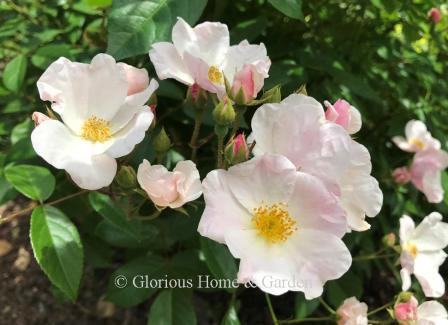 Rosa ‘Little Butterfly,’ Rupert, 2000.
Rosa ‘Little Butterfly,’ Rupert, 2000.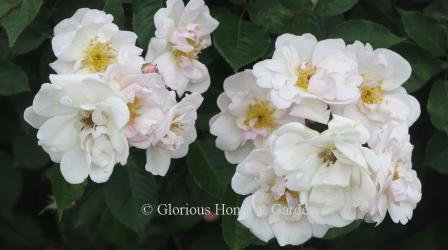 Rosa ‘Marie Pavié,' Alegatiere, 1888.
Rosa ‘Marie Pavié,' Alegatiere, 1888.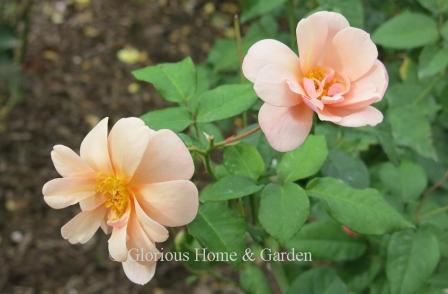 Rosa ‘Perle d’Or,’ Dubreuil, 1884, an Earth-Kind® selection.
Rosa ‘Perle d’Or,’ Dubreuil, 1884, an Earth-Kind® selection.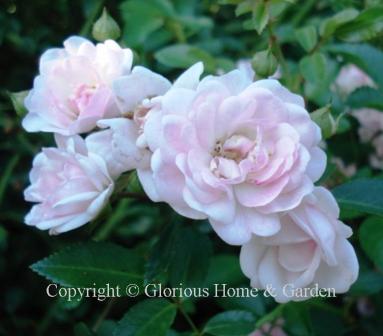 Rosa ‘The Fairy,’ Bentall, 1932, an Earth-Kind® selection.
Rosa ‘The Fairy,’ Bentall, 1932, an Earth-Kind® selection.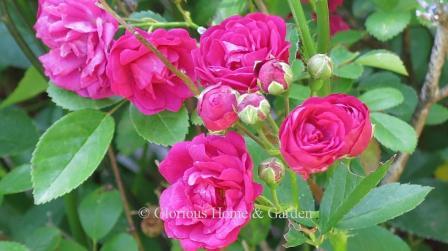 Rosa ‘Verdun,’ Barbier Freres & Compagnie, 1918.
Rosa ‘Verdun,’ Barbier Freres & Compagnie, 1918.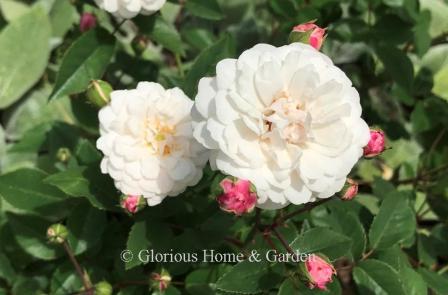 Rosa ‘White Pet,’ Henderson, 1879
Rosa ‘White Pet,’ Henderson, 1879Rambler Roses
Not your ordinary climbing rose, ramblers are distinct from climbing roses. Plant a rambler rose and stand back! These roses are fantastic for growing over arches and pergolas, for creating a striking hedge trained on posts and wires for a boundary or privacy screen, for covering unsightly buildings or fences, even to grow through trees, for some of them can reach pretty extraordinary lengths--give them lots of room. Ramblers produce clusters of small flowers in great profusion, and are very vigorous and often very prickly—the prickles help them climb into trees. The important thing to remember about rambler roses is that they have one glorious period of bloom in summer on old growth, so if they require pruning, they should be pruned right after flowering, only removing growth that bloomed that year. Ramblers include ‘Adélaïde d’Orléans,’ blush white; ‘American Pillar,’ bright pink; ‘Baltimore Belle,’ pale pink; ‘Bleu Magenta,’ purple; 'Blush Rambler,' pink; ‘Crimson Showers,’ crimson red; ‘Easlea’s Golden Rambler,’ yellow; ‘Super Dorothy,’ pink; ‘Félicité et Perpétue,’ very pale pink near white and nearly evergreen; ‘Paul’s Himalayan Musk,’ double pale pink to 30’; 'Paul's Lemon Pillar,' pale lemon yellow; ‘Rambling Rector,’ white; ‘René Andre’, apricot-pink; Rosa filipes ‘Kiftsgate,’ white; Rosa laevigata ‘Cooperi,’ white; ‘Veilchenblau,’ blue-violet w/white eye.
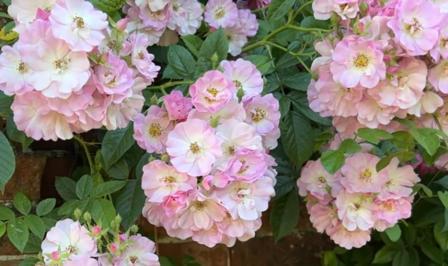 ‘Blush Rambler,’ Benjamin R. Cant & Sons, 1903
‘Blush Rambler,’ Benjamin R. Cant & Sons, 1903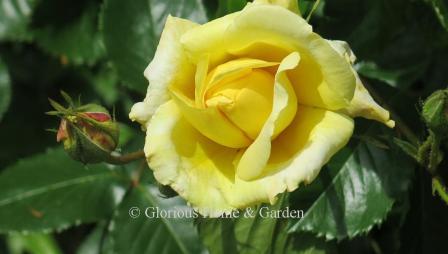 Rosa 'Easlea's Golden Rambler,' Walter Easlea & Sons, 1932
Rosa 'Easlea's Golden Rambler,' Walter Easlea & Sons, 1932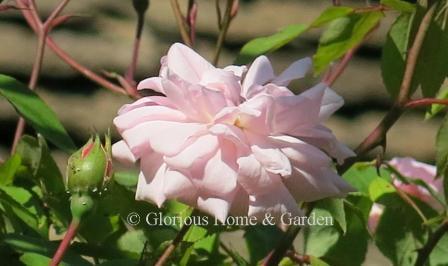 Rosa 'Félicité et Perpétue,' Antoine A. Jacques, 1827
Rosa 'Félicité et Perpétue,' Antoine A. Jacques, 1827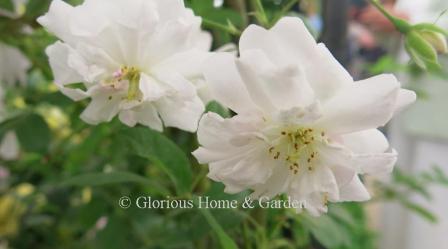 Rosa 'Paul's Himalayan Musk,' George Paul, Jr., 1916
Rosa 'Paul's Himalayan Musk,' George Paul, Jr., 1916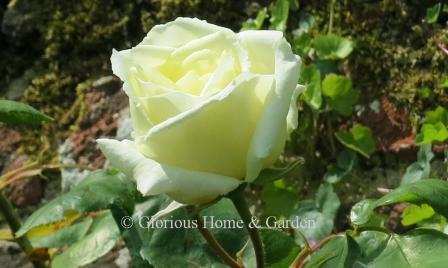 Rosa 'Paul's Lemon Pillar,' William Paul, 1916
Rosa 'Paul's Lemon Pillar,' William Paul, 1916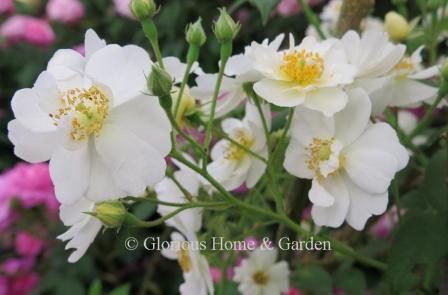 Rosa 'Rambling Rector,' 1899.
Rosa 'Rambling Rector,' 1899.Shrub Roses
Shrub roses, or landscape roses, are a fairly new group of modern roses. They are eminently useful for many purposes including hedging, massing for drifts of color, in perennial borders or as accents.
David Austin Roses: The great rose breeder, David Austin (1926-2018), left an outstanding legacy of modern shrub roses. He thought that most modern roses lacked the grace of old roses, and also the scent, so he sought to create modern roses with the form, grace and perfume of the old roses with repeat flowering and healthy vigor. His success can be seen in the examples below. David Austin Roses, or English Roses, as he called them, are cherished all over the world.
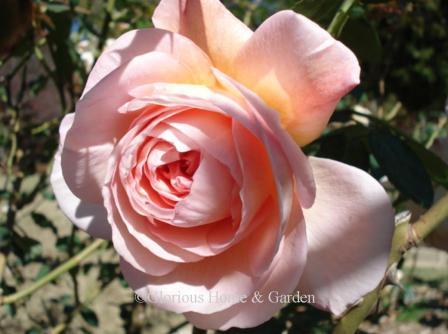 Rosa 'Abraham Darby,' 1985.
Rosa 'Abraham Darby,' 1985.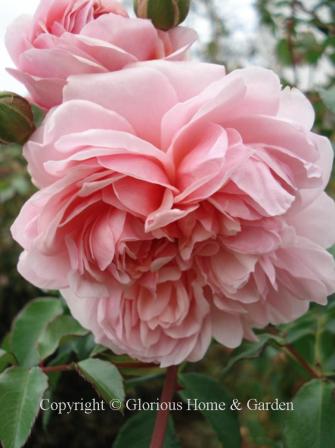 Rosa 'Anne Boleyn,' 1999.
Rosa 'Anne Boleyn,' 1999.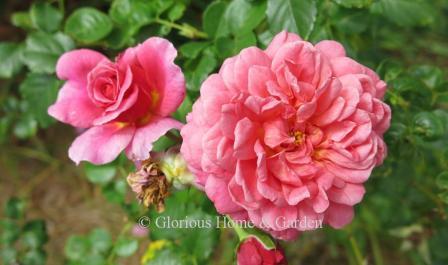 Rosa 'Christopher Marlowe,' 2002.
Rosa 'Christopher Marlowe,' 2002.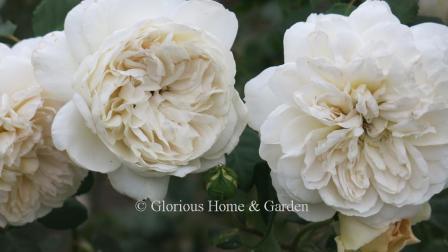 Rosa 'Crocus Rose' 2000.
Rosa 'Crocus Rose' 2000.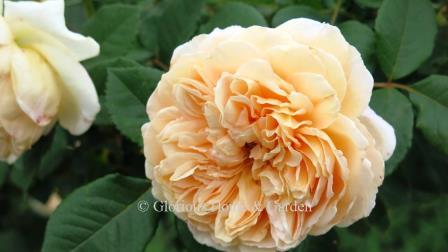 Rosa 'Crown Princess Margareta,' 1999.
Rosa 'Crown Princess Margareta,' 1999.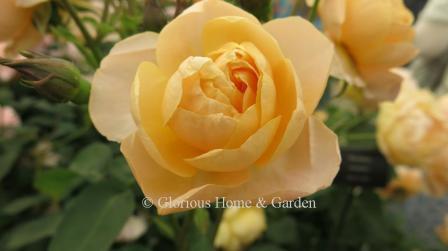 Rosa 'Dannahue,' 2023.
Rosa 'Dannahue,' 2023.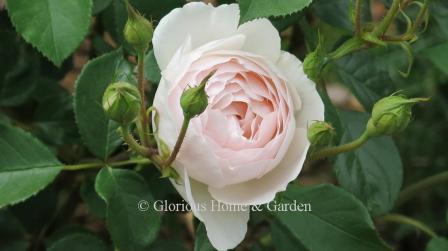 Rosa 'Desdemona,' 2015.
Rosa 'Desdemona,' 2015.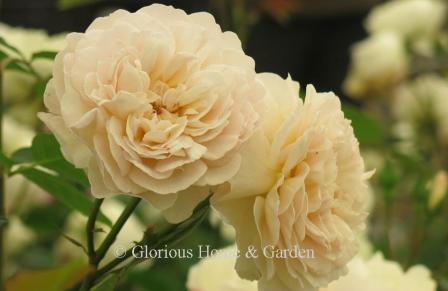 Rosa 'Emily Brontë,' 2018.
Rosa 'Emily Brontë,' 2018.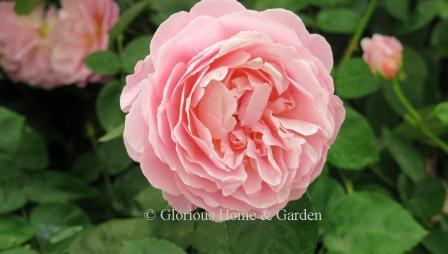 Rosa 'Eustacia Vye,' 2019.
Rosa 'Eustacia Vye,' 2019.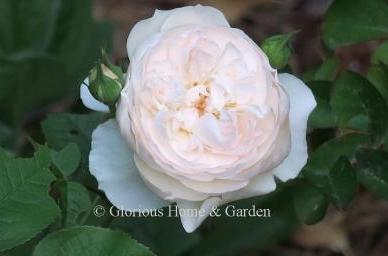 Rosa 'Gentle Hermione,' 2005.
Rosa 'Gentle Hermione,' 2005.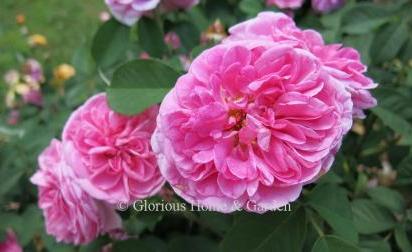 Rosa 'Gertrude Jekyll,' 1986.
Rosa 'Gertrude Jekyll,' 1986.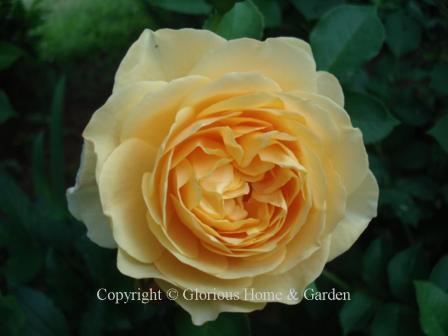 Rosa 'Graham Thomas,' 1983.
Rosa 'Graham Thomas,' 1983.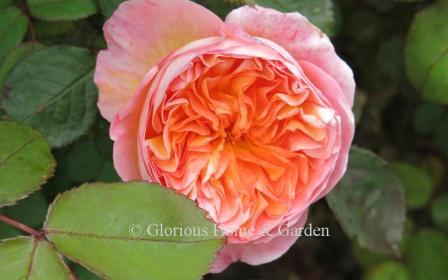 Rosa 'Lady Emma Hamilton,' 2005.
Rosa 'Lady Emma Hamilton,' 2005.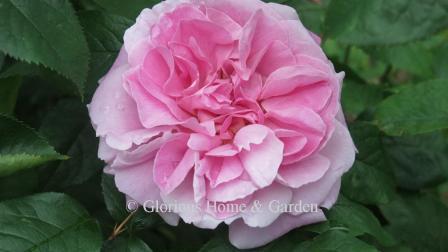 Rosa 'Mary Rose,' 1983.
Rosa 'Mary Rose,' 1983.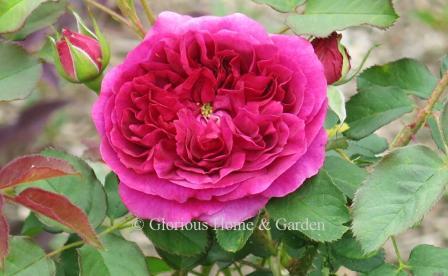 Rosa 'Munstead Wood,' 2007.
Rosa 'Munstead Wood,' 2007.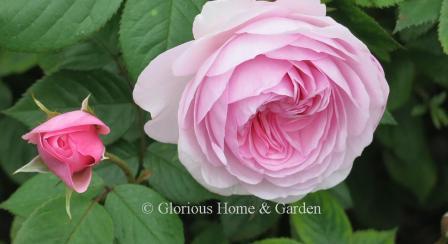 Rosa 'Olivia Rose Austin,' 2014.
Rosa 'Olivia Rose Austin,' 2014.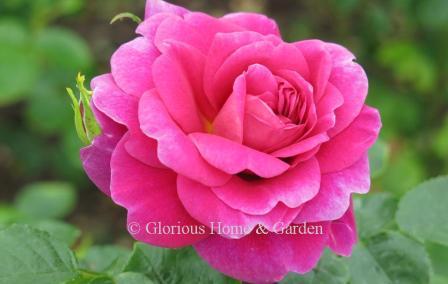 Rosa 'Princess Anne,' 2010.
Rosa 'Princess Anne,' 2010.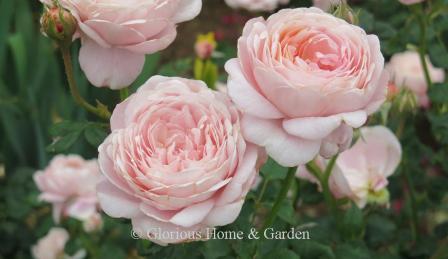 Rosa 'Queen of Sweden,' 2004.
Rosa 'Queen of Sweden,' 2004.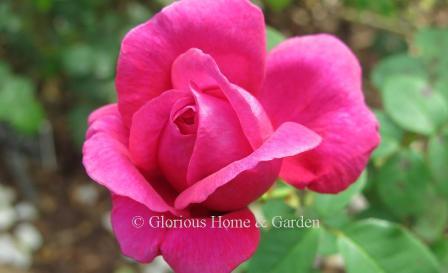 Rosa 'The Dark Lady,' 1991.
Rosa 'The Dark Lady,' 1991.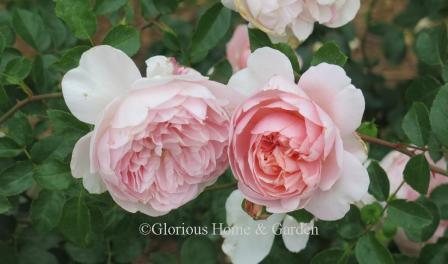 Rosa 'Wildeve,' 2003.
Rosa 'Wildeve,' 2003.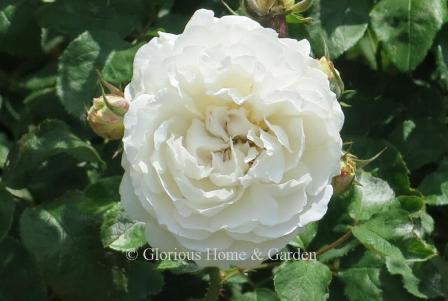 Rosa 'Winchester Cathedral,' 1988.
Rosa 'Winchester Cathedral,' 1988.Drift® Roses, marketed by Star Roses, which also introduced the famous ‘Knock Out®’ series of shrub roses, is a very useful series to use as a ground cover, for small spaces, in the mixed perennial border, or even for a low hedge as they grow to about 18”. Available in colors of white, cream, yellow, apricot, coral, pink, rose and red. Zone 4-11.
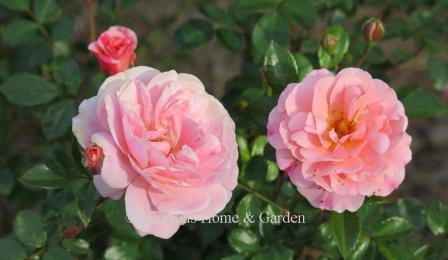 Rosa 'Apricot Drift®,' Meilland.
Rosa 'Apricot Drift®,' Meilland.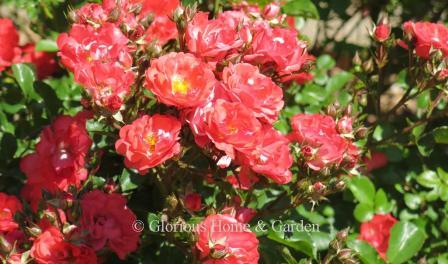 Rosa 'Coral Drift®,' Meilland, 2006.
Rosa 'Coral Drift®,' Meilland, 2006.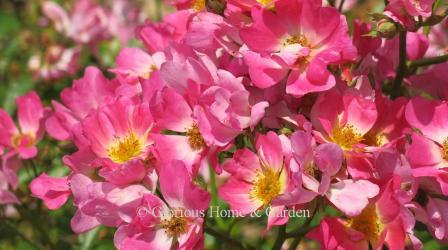 Rosa 'Pink Drift®,' Meilland.
Rosa 'Pink Drift®,' Meilland.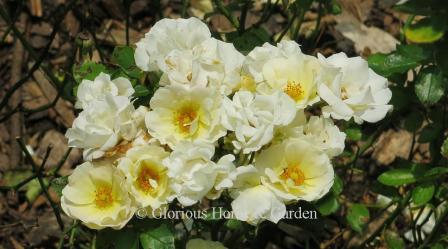 Rosa 'Popcorn Drift®,' Meilland.
Rosa 'Popcorn Drift®,' Meilland.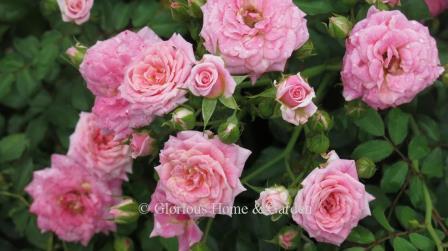 Rosa ‘Sweet Drift®,’ Meilland, 2009.
Rosa ‘Sweet Drift®,’ Meilland, 2009.Knock Out® Roses, Zones 5-9. Afraid to grow roses? Here’s one you can hardly fail with bred by American William Radler and introduced by Star Roses, The Knock Out® series of shrub roses will bloom almost non-stop from late spring until frost leading to widespread use by landscapers and homeowners alike. They are known for their disease resistance, and are available in a multitude of colors including red, pink, blush, coral, yellow, and white. Zones 4-11.
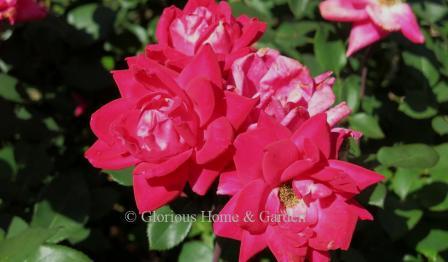 Rosa 'Double' Knock Out®
Rosa 'Double' Knock Out®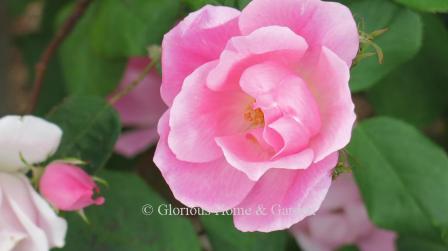 Rosa 'Blushing' Knock Out®
Rosa 'Blushing' Knock Out®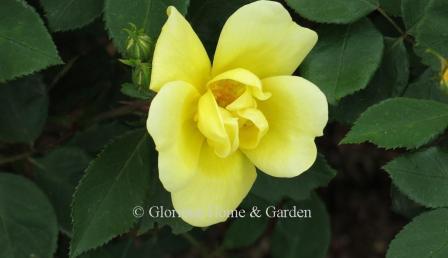 Rosa 'Sunny' Knock Out®
Rosa 'Sunny' Knock Out®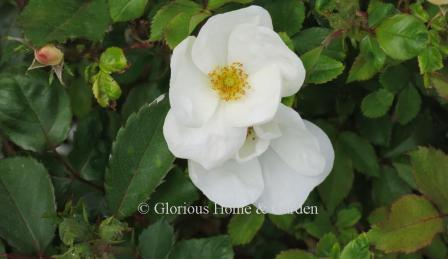 Rosa 'White' Knock Out®
Rosa 'White' Knock Out®Other great modern shrub roses:
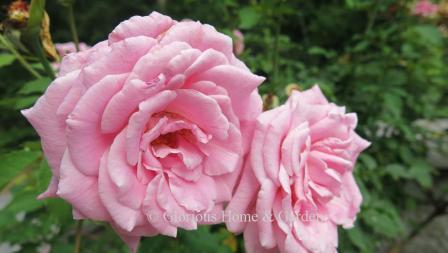 Rosa 'Belinda's Dream,' Bayse, 1992, an Earth-Kind® selection.
Rosa 'Belinda's Dream,' Bayse, 1992, an Earth-Kind® selection.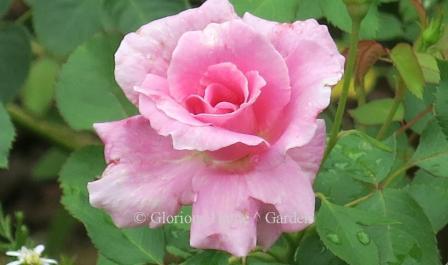 ‘Carefree Beauty™,’ Buck, 1977, an Earth-Kind® selection.
‘Carefree Beauty™,’ Buck, 1977, an Earth-Kind® selection.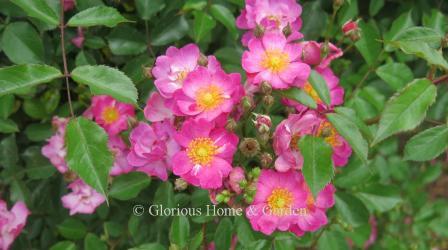 ‘DayDream™,’ Lim, 2004.
‘DayDream™,’ Lim, 2004.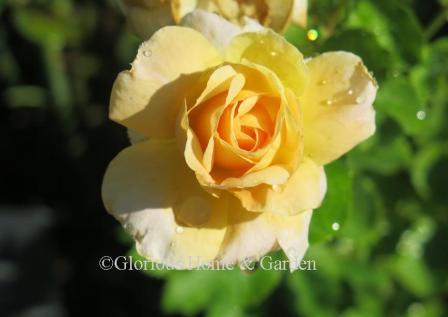 ‘F. J. Lindheimer,’ Shoup, 2004.
‘F. J. Lindheimer,’ Shoup, 2004.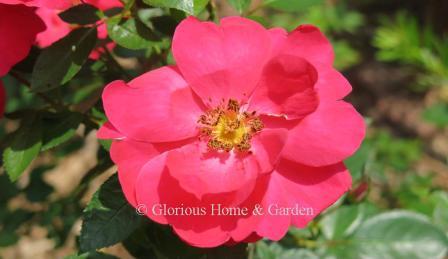 Kolorscape® ‘Cheri™,’ Kordes.
Kolorscape® ‘Cheri™,’ Kordes.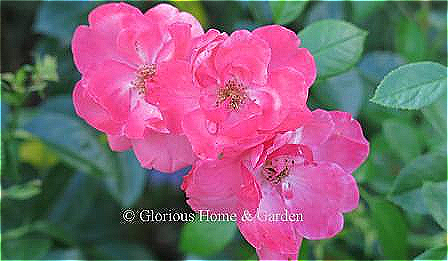 ‘Lady Elsie May,’ Noack, 2002.
‘Lady Elsie May,’ Noack, 2002.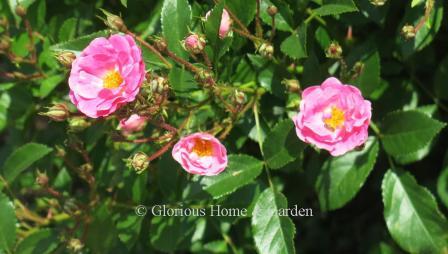 ‘Martha’s Vineyard,’ Olesen, 1995.
‘Martha’s Vineyard,’ Olesen, 1995.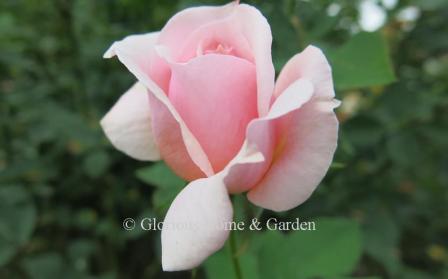 ‘Quietness,’ Buck, 2003.
‘Quietness,’ Buck, 2003.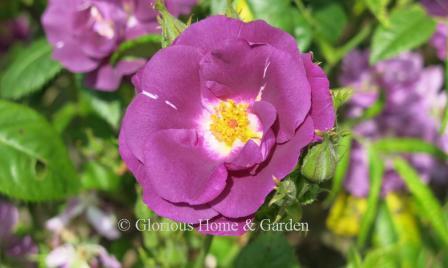 ‘Rhapsody in Blue,’ Cowlishaw, 1999.
‘Rhapsody in Blue,’ Cowlishaw, 1999.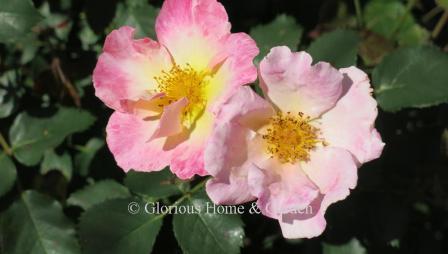 ‘Watercolors Home Run®,’ Carruth, 2016, Weeks Roses.
‘Watercolors Home Run®,’ Carruth, 2016, Weeks Roses.A Word About Rose Rosette Disease--
It's Not a Pretty Sight
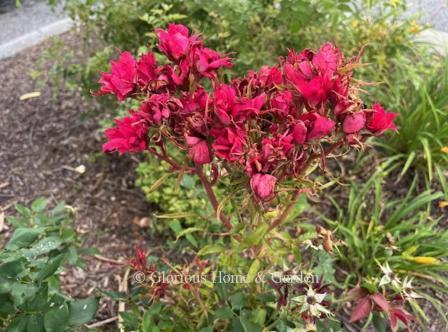 Rose rosette disease
Rose rosette diseaseI have noticed a tendency for roses to contract rose rosette disease especially in large mass plantings. Rose rosette disease is distinctive. The plant develops distorted growth near the ends of branches in a compact mass like a witch’s broom and the foliage and stems turn red in color. The disease is a virus spread by mites and will disfigure and weaken the plant making it susceptible to other common rose diseases like black spot and will eventually kill it. Unfortunately, there is no cure at present and the best thing to do if you suspect rose rosette disease, is to remove and destroy the plant to help prevent its spread. It is even recommended that you not plant another rose in the same location unless you completely remove and change the soil. This is a serious threat to roses. Hybrid teas, floribundas, old roses, shrub roses and others are all susceptible.
It is good practice to follow precautions when pruning roses such as cleaning pruners between cuts with disinfectant, picking dropped leaves off the ground, raking out and changing the mulch yearly, and not composting clippings, but bagging and discarding or burning them.
Plant of the Month
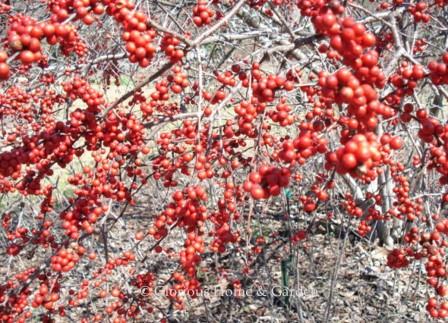
Ilex verticillata
Winterberry holly
Updated new USDA Plant Hardiness Zone Map 2023.